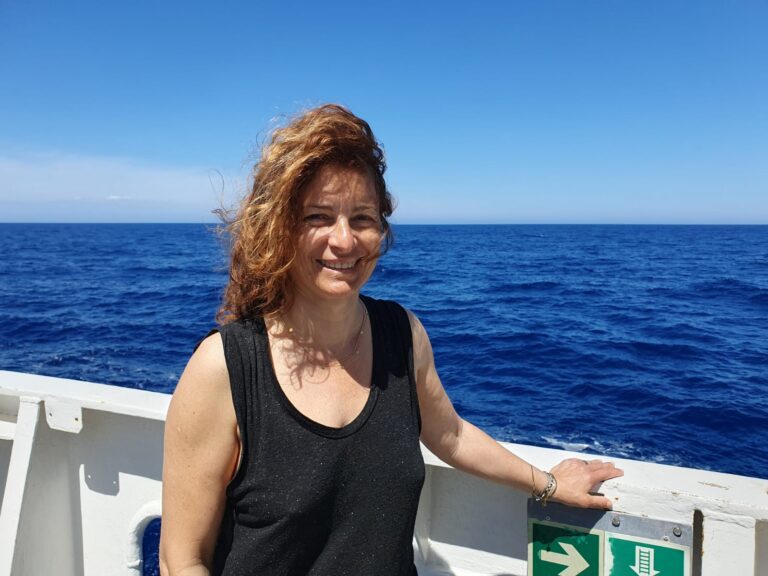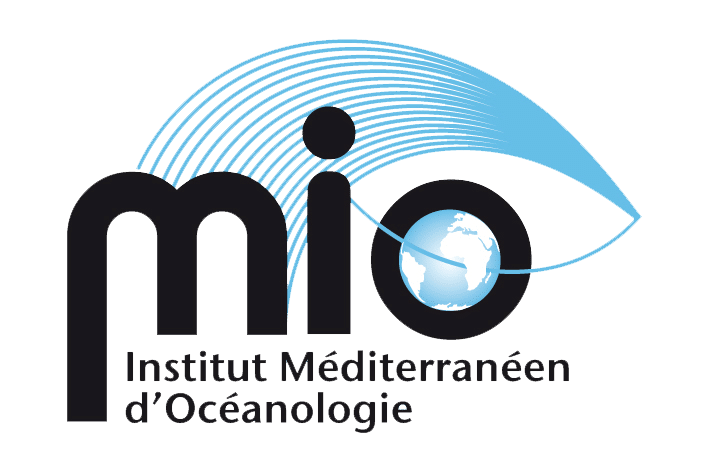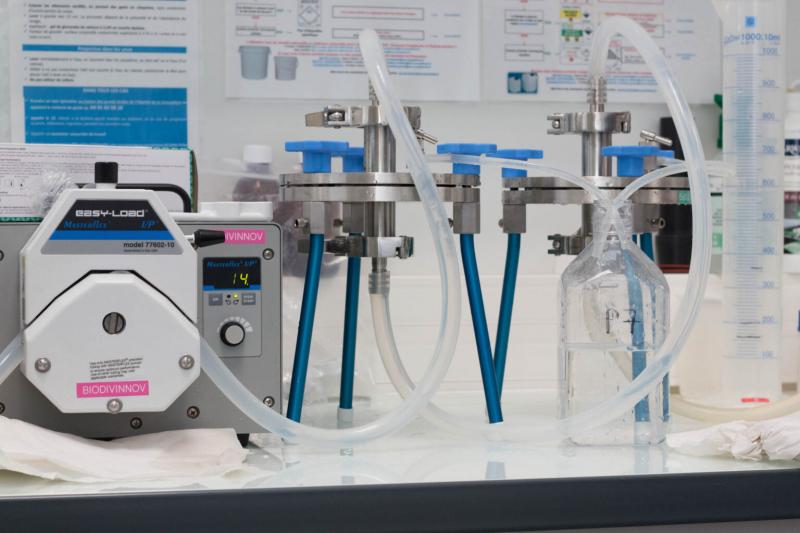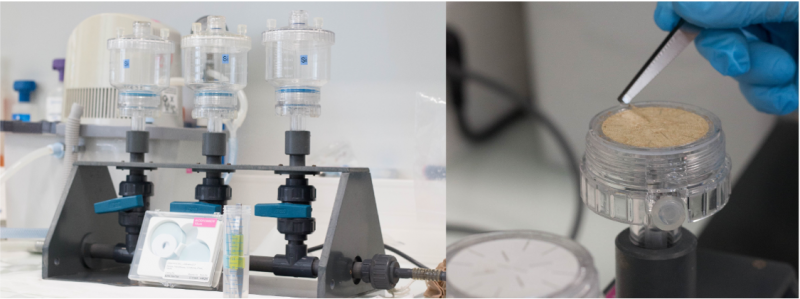Omics
As part of the BioSWOT-Med campaign, Magali Lescot is responsible for WP5 on genomics. She will be collecting samples to study the microbial community (viruses, bacteria, protists) in order to assess the disparate nature of these functional types and taxa of the plankton and to monitor the short-term biogeochemical functional responses of the microbiome to the highly dynamic physical environment.

Magali Lescot aboard the R/V L'Atalante during the BioSWOT-Med campaign.
RESEARCH THEMES - Magali Lescot is a research engineer at the CNRS (Centre National de la Recherche Scientifique), at the Institut Méditerranéen d'Océanographie in Marseille (France). Her research focuses on the evolution of the plankton genome and its adaptation to its environment. As part of the BioSWOT-Med campaign, she is responsible for the genomics working group.
As part of the BioSWOT-Med campaign, you will be collecting samples to study the microbial community (viruses, bacteria, protists). What are the different hypotheses to explain their distribution and dispersion?
The distribution and dispersion of the microbial community (plankton) depend on environmental parameters and the physics of the ocean.
As part of the BioSWOT-Med campaign, we will be testing two hypotheses. The first hypothesis is that of 'fluid dynamic niches' - horizontal mixing can create a mosaic of water masses of different origins, in which contrasting phytoplankton communities can develop. Contact regions where several of these 'fluid dynamic niches' are agitated together and end up mixing will become hotspots of diversity.
According to this hypothesis, the formation or dissipation of thin vertical layers of phytoplankton during stratification or mixing can significantly modify phytoplankton concentrations, grazer encounter rates and grazing losses, thereby modulating community structure and diversity and, ultimately, their biogeochemical functions.
You will be using a series of techniques known as 'omics'? What are they?
Omics" refers to disciplines such as genomics, metabolomics, proteomics, metagenomics and transcriptomics, which study the molecules (such as genes for genomics and transcripts for transcriptomics) of a cell, organism or ecosystem.
For example, metabarcoding (amplification of genetic markers, genomics) makes it possible to decipher the diversity of the microbial community by identifying several taxa simultaneously in a sample using DNA sequencing.
Sequencing the genes expressed by micro-organisms (transcriptome) will tell us more about the function of genes and what micro-organisms do when we use them.
Sequential water column filtration system. A peristaltic pump passes seawater through the system. The seawater first passes through a 142 mm filtration unit fitted with a 3 μm PC filter, then through a 142 mm filtration unit fitted with a 0.2 μm PC filter.
Filtration equipment consisting of a filtration ramp (left) and 47 mm filtration units (right) connected to a vacuum pump used to analyse samples collected using a vertical tow by a 20 μm mesh plankton net from a depth of 100 m to the surface of the water column. The material collected in the codend of the plankton net is diluted and separated into sub-samples. Each sub-sample is then filtered through 10 μm (47 mm diameter) polycarbonate membrane filters under vacuum pressure (see image right). After filtration, the membranes should be left to dry, carefully folded and placed in individual tubes and stored at -80°C.
Contact us: Tosca Ballerini
More information






